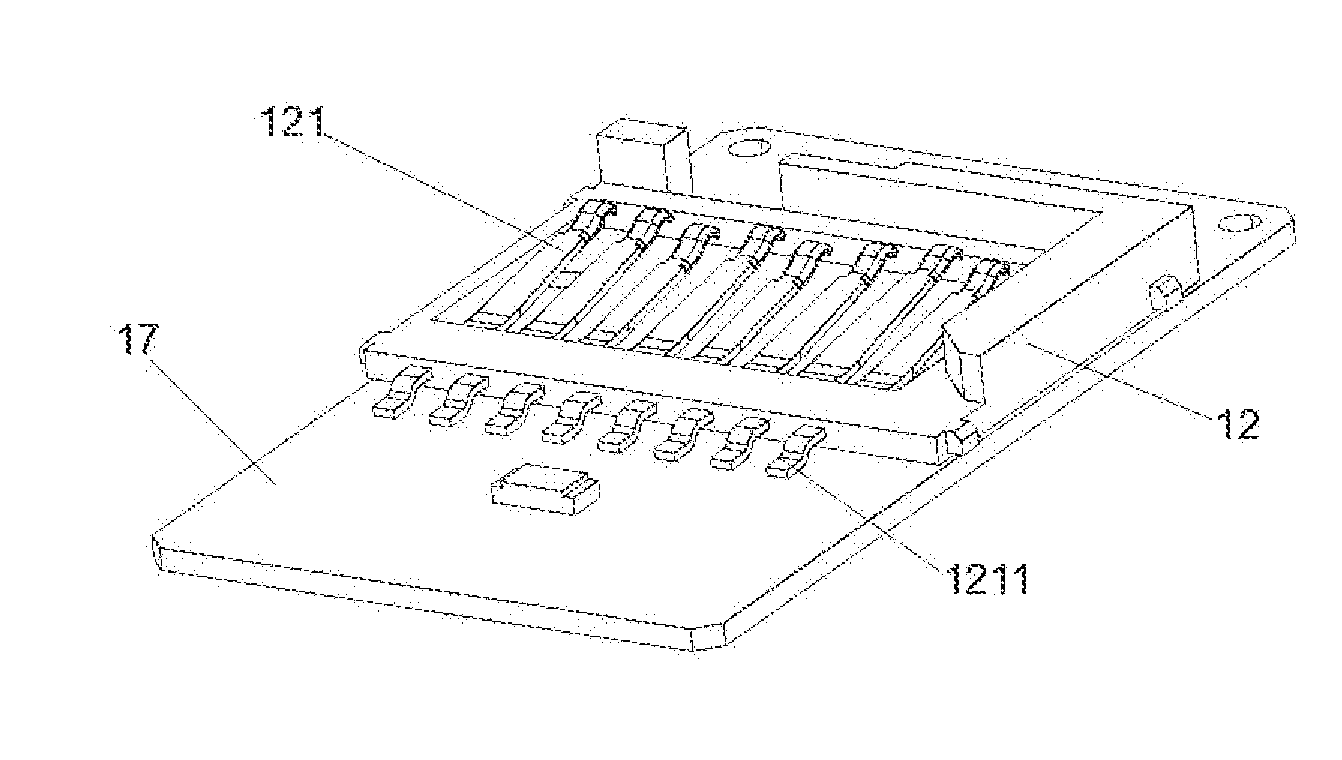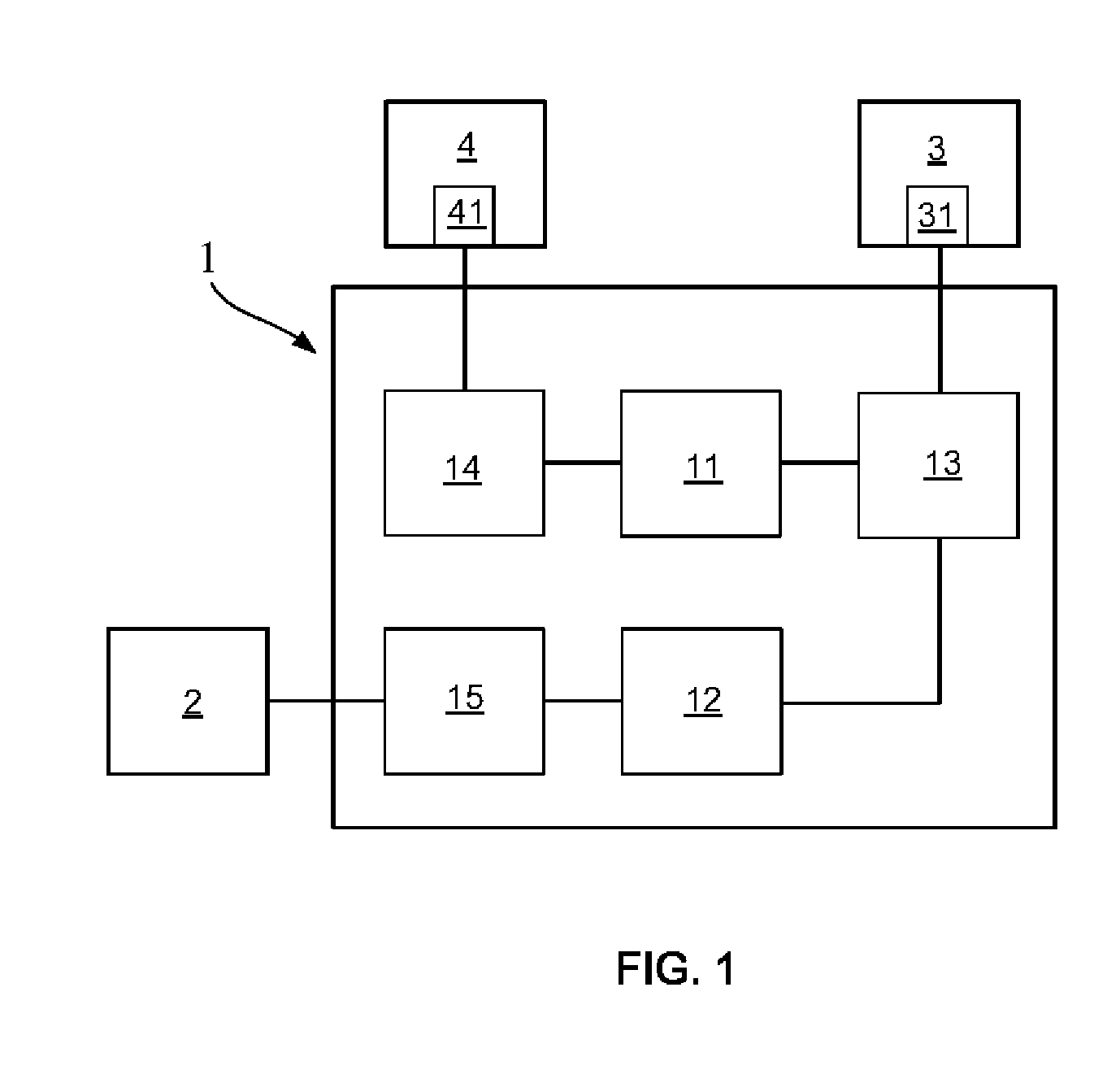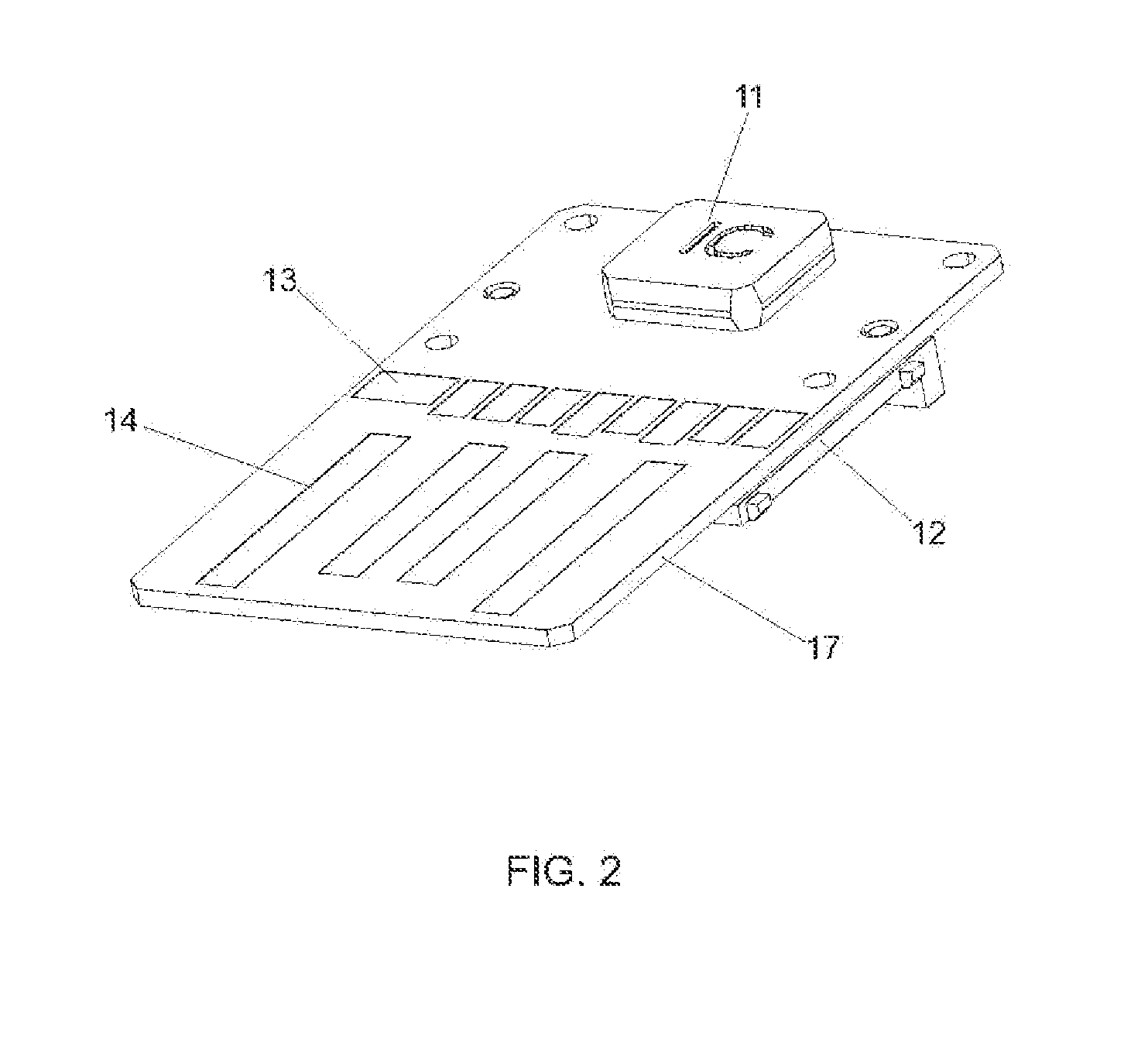Card-reading device and method for using the card-reading device to access memory card
- Summary
- Abstract
- Description
- Claims
- Application Information
AI Technical Summary
Benefits of technology
Problems solved by technology
Method used
Image
Examples
first embodiment
[0042]Referring to FIG. 11 and FIG. 12 again, the first interface unit 13 is a Micro SD memory card interface unit, in addition, the same to the first embodiment, the second interface unit 14 is the USB interface unit. The third interface unit 16 is also the memory card interface unit, wherein according to the different memory cards 2 having compatibleness with the third interface unit 16, the third interface unit 16 can be an MC memory card interface unit, a CF memory card interface unit, an xD memory card interface unit, an MMC memory card interface unit, a RS-MMC memory card interface unit, an SD memory card interface unit, an MS Duo memory card interface unit, a Mini SD memory card interface unit, or a Micro SD memory card interface unit. The third interface unit 16 is made up of a plurality of metal pins, and the width sizes of the metal pins are ranged between 15 mm to 37 mm, moreover, corresponding to the different memory cards 2 having compatibleness with the third interface...
fourth embodiment
[0043]In the card-reading device 1 described above, both the first interface unit 13 and the third interface unit 16 are able to be inserted into the memory connection port 31 of the first electronic device 3, such as the cell phone, wherein when the third interface unit 16 is inserted into the memory connection port 31, meanwhile, the first electronic device 3 can access the memory card 2 through the third interface unit 16 and the additional connecting unit 12.
[0044]It needs to note that, in the fourth embodiment of the card-reading device 1, Since the MMC memory card interface unit (having 7 metal pins), the RS-MMC memory card interface unit (having 7 metal pins) and the SD memory card interface unit (having 9 metal pins) have the same width size (24 mm) of metal pin, the MMC memory card interface unit, the RS-MMC memory card interface unit and the SD memory card interface unit can be simultaneously implemented in the single third interface unit 16, thus, the third interface unit...
PUM
 Login to View More
Login to View More Abstract
Description
Claims
Application Information
 Login to View More
Login to View More - R&D
- Intellectual Property
- Life Sciences
- Materials
- Tech Scout
- Unparalleled Data Quality
- Higher Quality Content
- 60% Fewer Hallucinations
Browse by: Latest US Patents, China's latest patents, Technical Efficacy Thesaurus, Application Domain, Technology Topic, Popular Technical Reports.
© 2025 PatSnap. All rights reserved.Legal|Privacy policy|Modern Slavery Act Transparency Statement|Sitemap|About US| Contact US: help@patsnap.com



